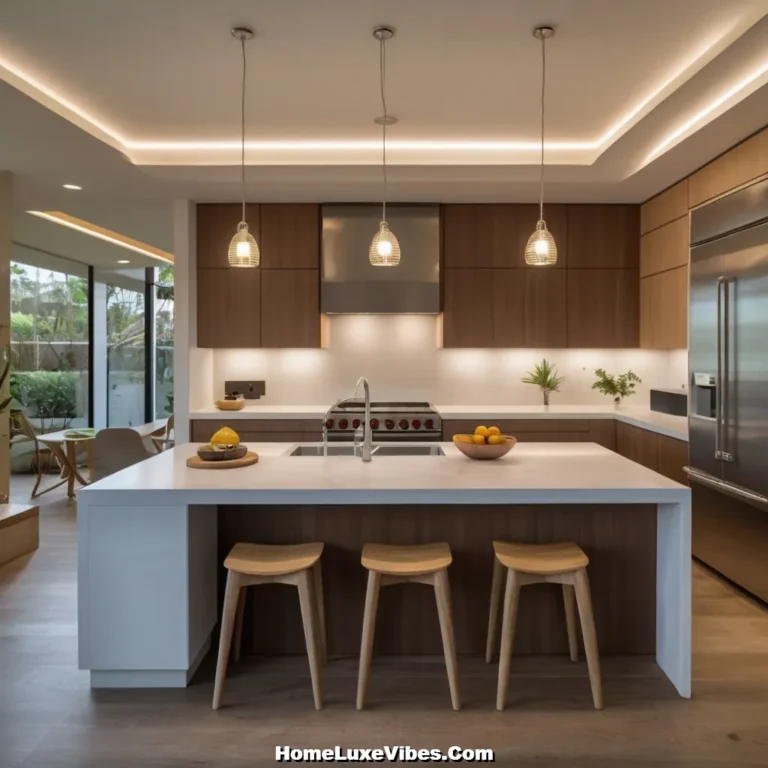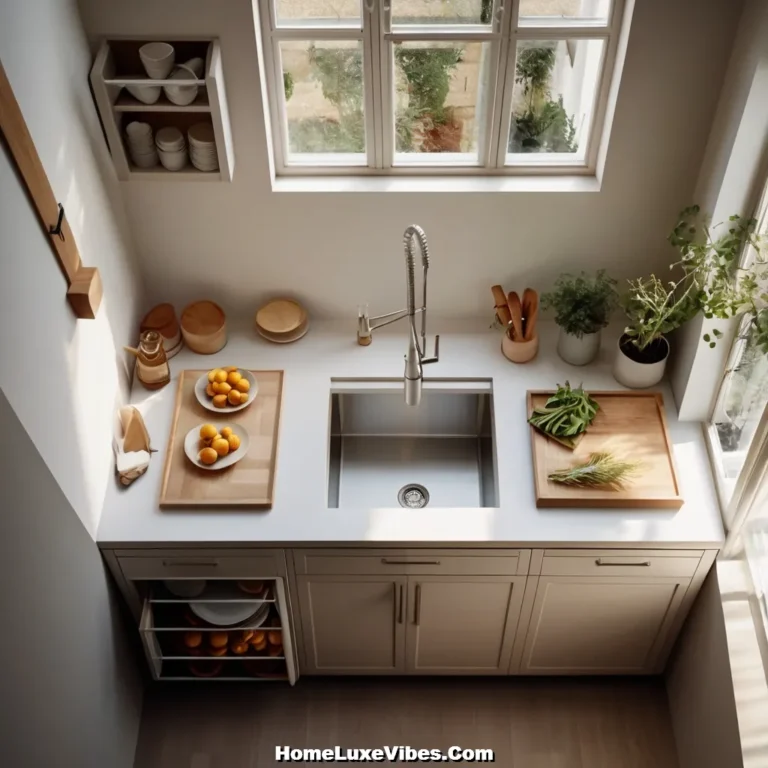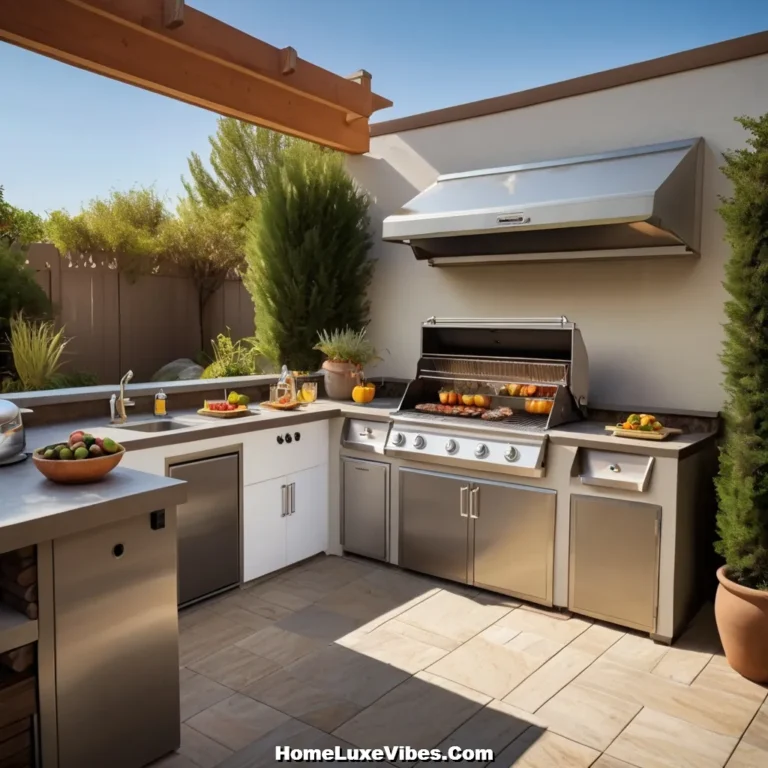11+ Transitional Kitchen Ideas for a Timeless, Stylish Home
Transitional kitchens blend traditional and modern styles to create a balanced and timeless look. This design approach offers flexibility, making it suitable for many different homes and personal tastes.
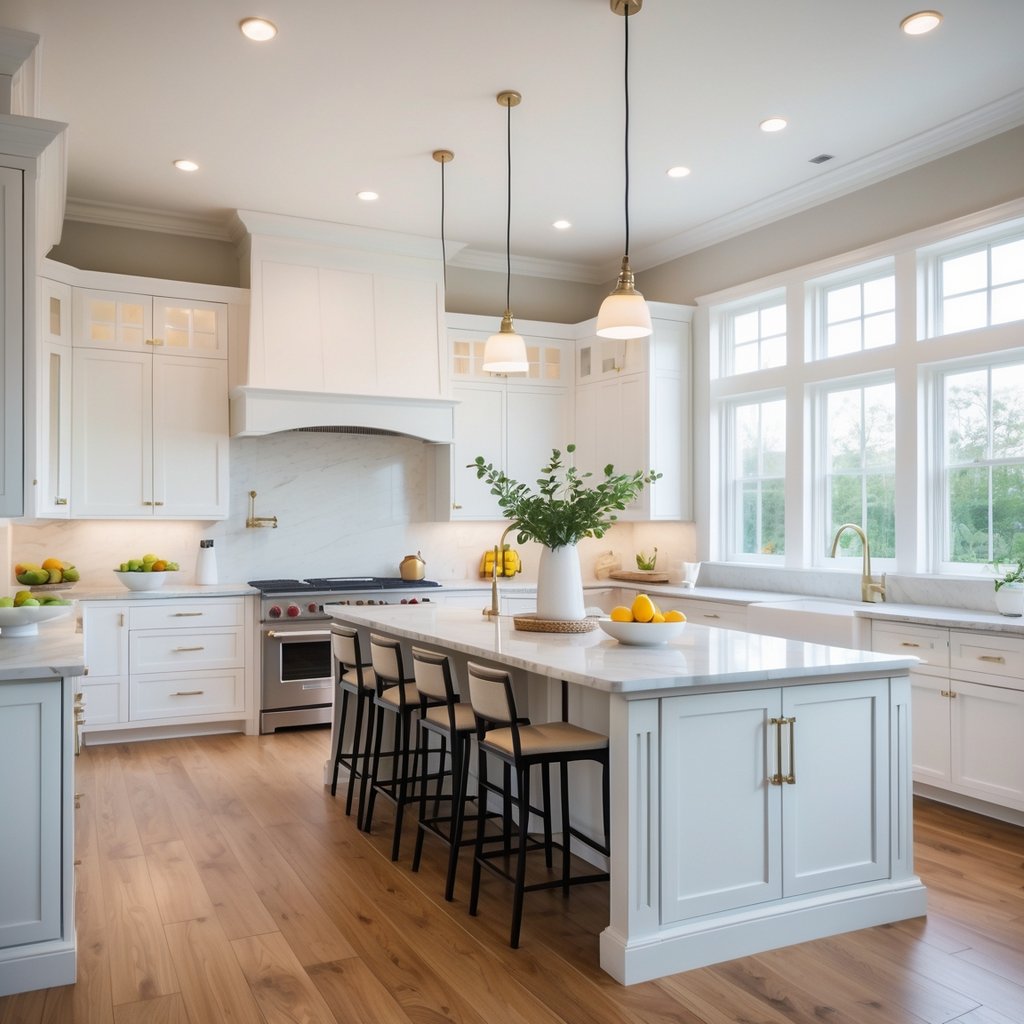
It combines the warmth of classic kitchen elements with the clean lines of contemporary design to create spaces that feel both comfortable and current. These ideas help homeowners update their kitchens while keeping a sense of lasting style.
1. Recessed-Panel Cabinets With Clean Lines:
Recessed-panel cabinets are a key feature in transitional kitchens. They have simple, clean lines that balance modern and traditional styles well.
These cabinets often come in painted wood or woodgrain finishes. This choice adds warmth without being too ornate or plain.
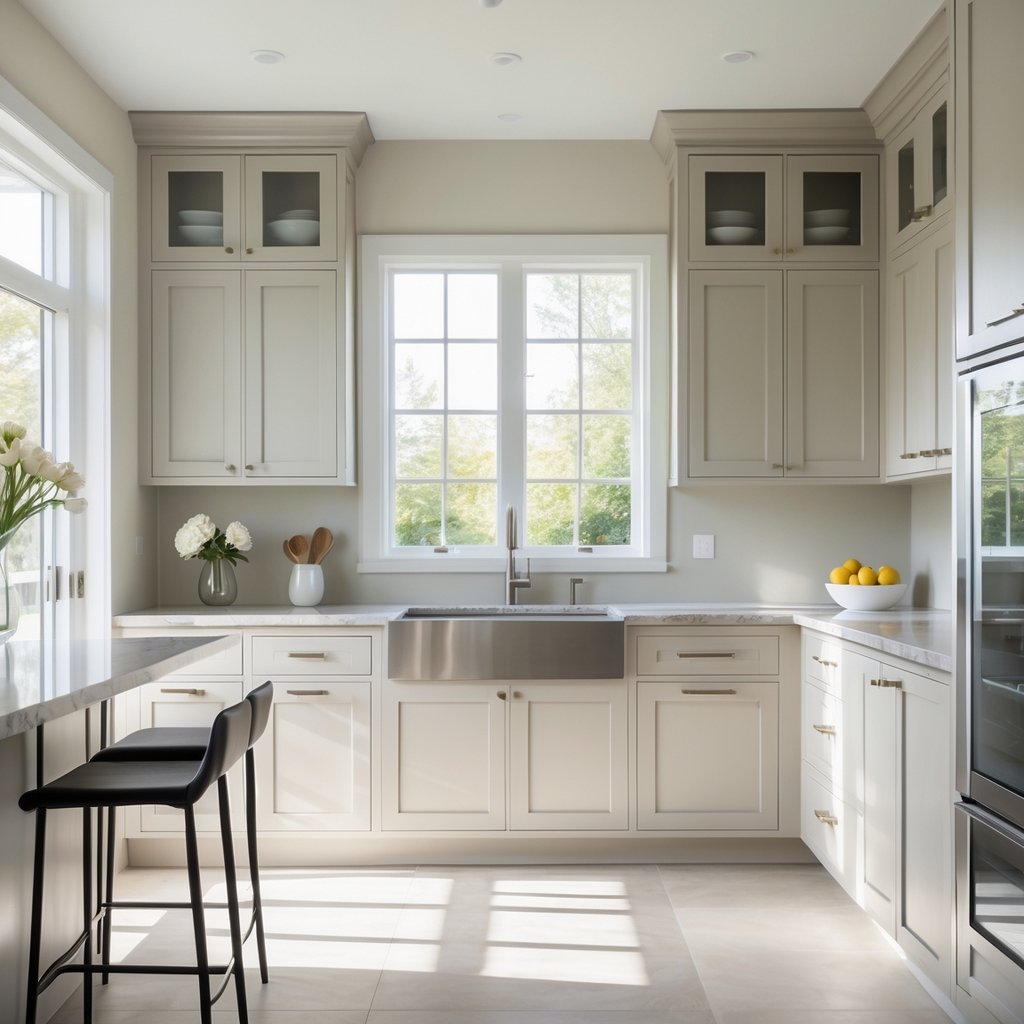
Clean lines help keep the kitchen looking tidy and uncluttered. They also provide plenty of storage, which is important in a functional kitchen.
Overall, recessed-panel cabinets contribute to a timeless look. They fit easily with other elements in a kitchen that mixes old and new design ideas.
2. Mix Of Painted Wood And Natural Woodgrain Cabinetry:
Mixing painted wood with natural woodgrain cabinets adds visual interest to a kitchen. The painted surfaces offer a clean, smooth look while the natural wood brings warmth and texture. This combination helps avoid a uniform or flat appearance.
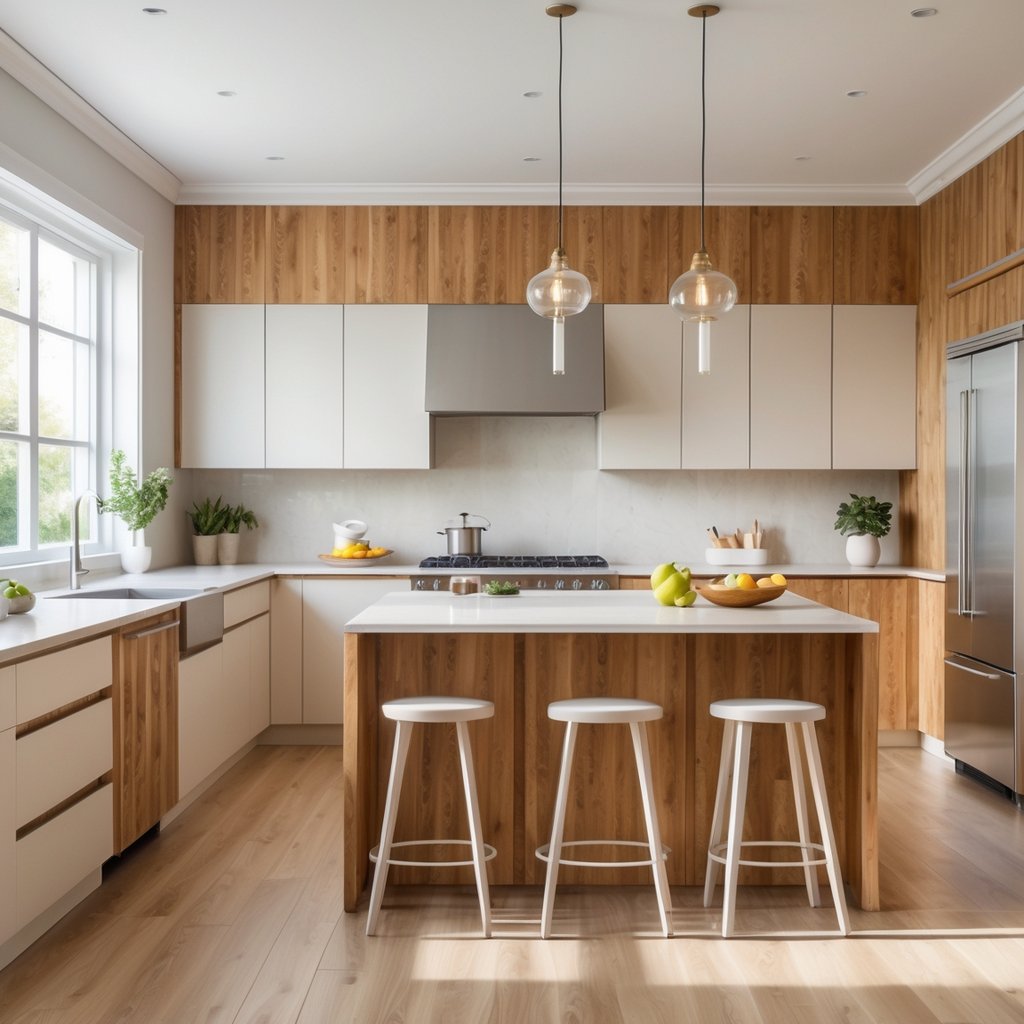
Careful color choices are important. Paint colors should complement the tones in the woodgrain to create a balanced and cohesive design.
Adding hardware and lighting highlights both cabinet styles. This mix fits well in transitional kitchens where classic and modern elements blend smoothly.
3. Neutral Color Palette With Warm Undertones:
A neutral color palette with warm undertones is ideal for transitional kitchens. It creates a calm and inviting atmosphere without overpowering the space. Soft whites, beige, and warm greiges work well together.
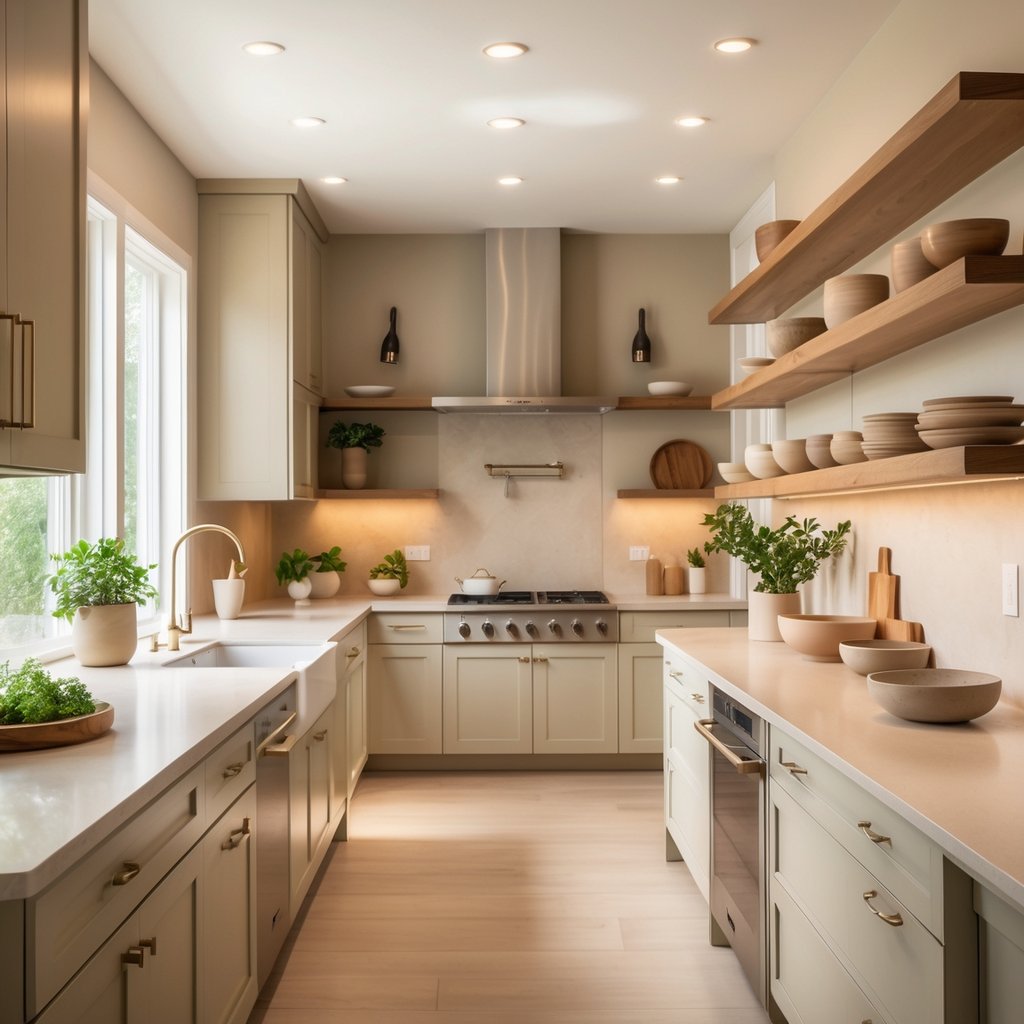
These colors provide a timeless look that blends modern and traditional styles. They make the kitchen feel comfortable and elegant at the same time. Warm neutral tones also allow for easy updates in decor over time.
Adding natural wood tones or subtle textures enhances the warmth. The result is a balanced, cohesive design that supports both function and style.
4. Open Wooden Shelving For Rustic Touch:
Open wooden shelves add a simple, rustic feel to a transitional kitchen. They show off natural wood grains and bring warmth without overwhelming the space.
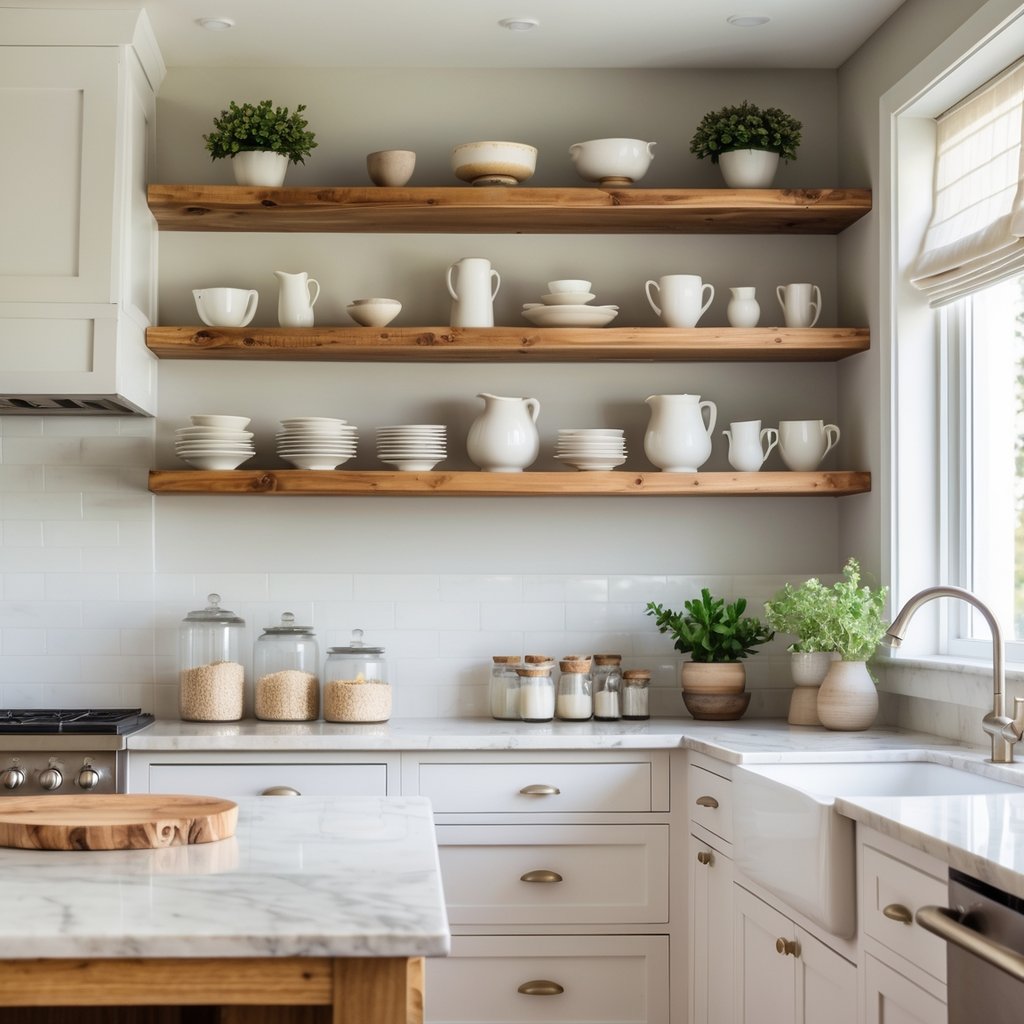
These shelves also offer practical storage. They keep everyday items within easy reach and help reduce clutter in cabinets.
Using reclaimed or rough-cut wood can enhance the rustic look. Paired with clean lines and neutral colors, open wooden shelves balance traditional and modern styles well.
5. Brass Or Matte Black Hardware Accents:
Brass and matte black hardware offer strong visual interest in a transitional kitchen. Brass adds warmth and a classic touch while still feeling fresh and modern.
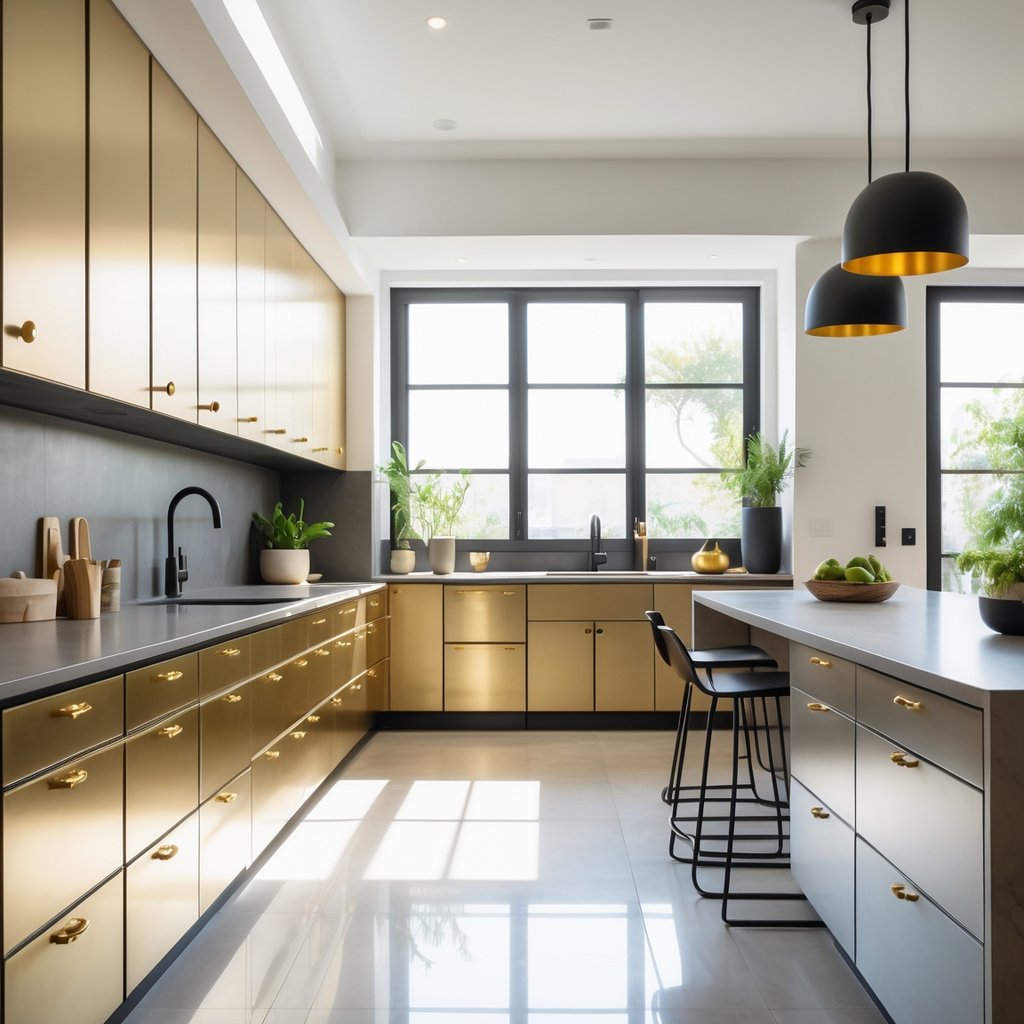
Matte black hardware gives a bold, sleek look. It works well on cabinets, lighting, and faucets to create contrast and depth.
Combining these finishes can balance style, pairing brass’s brightness with matte black’s strength. Both options fit well with many cabinet colors and kitchen styles.
6. White Quartz Or Marble Countertops:
White quartz and marble are popular choices for transitional kitchens. They bring a clean, bright look that works well with many cabinet colors.
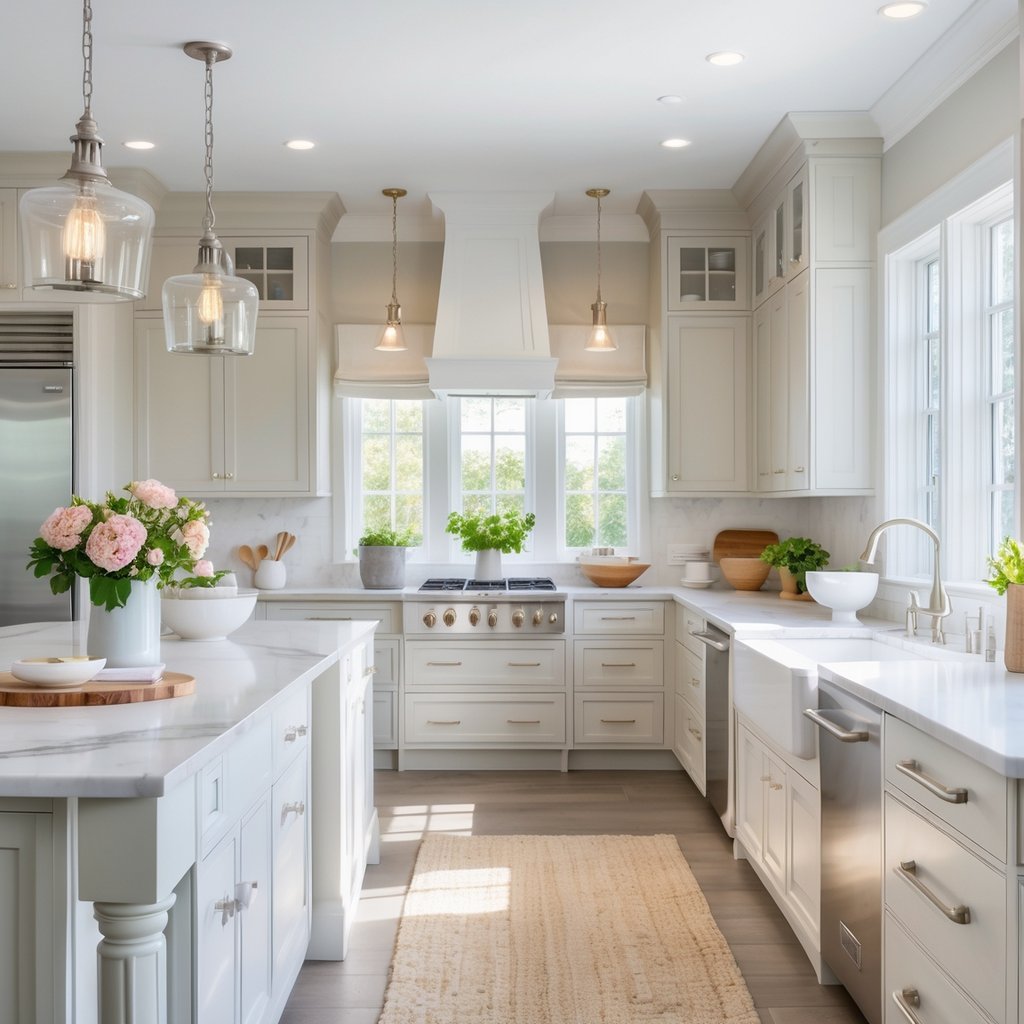
Quartz is durable and low-maintenance, making it practical for busy kitchens. Marble offers a classic, elegant style but needs more care to avoid stains and scratches.
Both materials fit well with different design elements like wood accents or colored cabinets. They can create a fresh, inviting atmosphere while keeping the kitchen timeless and functional.
7. Bold Statement Lighting Fixtures:
Bold statement lighting fixtures add a strong visual focus to transitional kitchens. These fixtures often include large chandeliers, unique pendants, or eye-catching bar lights.
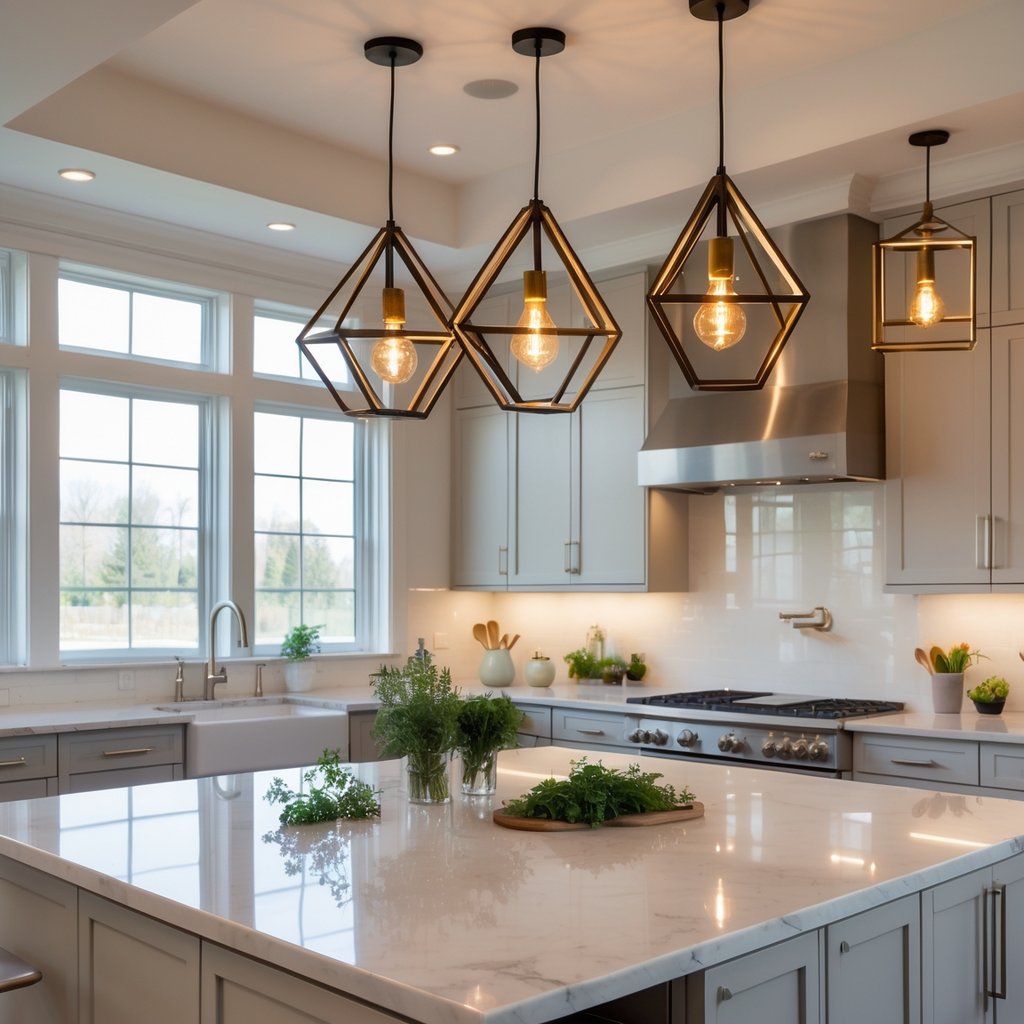
They provide both style and function by brightening the space while acting as a design feature. Popular choices use materials like brass or glass for an elegant look.
In 2025, layered lighting with statement pieces helps create warmth and character. It balances task lighting with ambient light for a well-lit, inviting kitchen.
8. Combination Of Modern And Traditional Backsplashes:
Transitional kitchens often use backsplashes that mix modern and traditional styles. Subway tiles are a popular choice because they have a classic look but also fit well with modern designs.
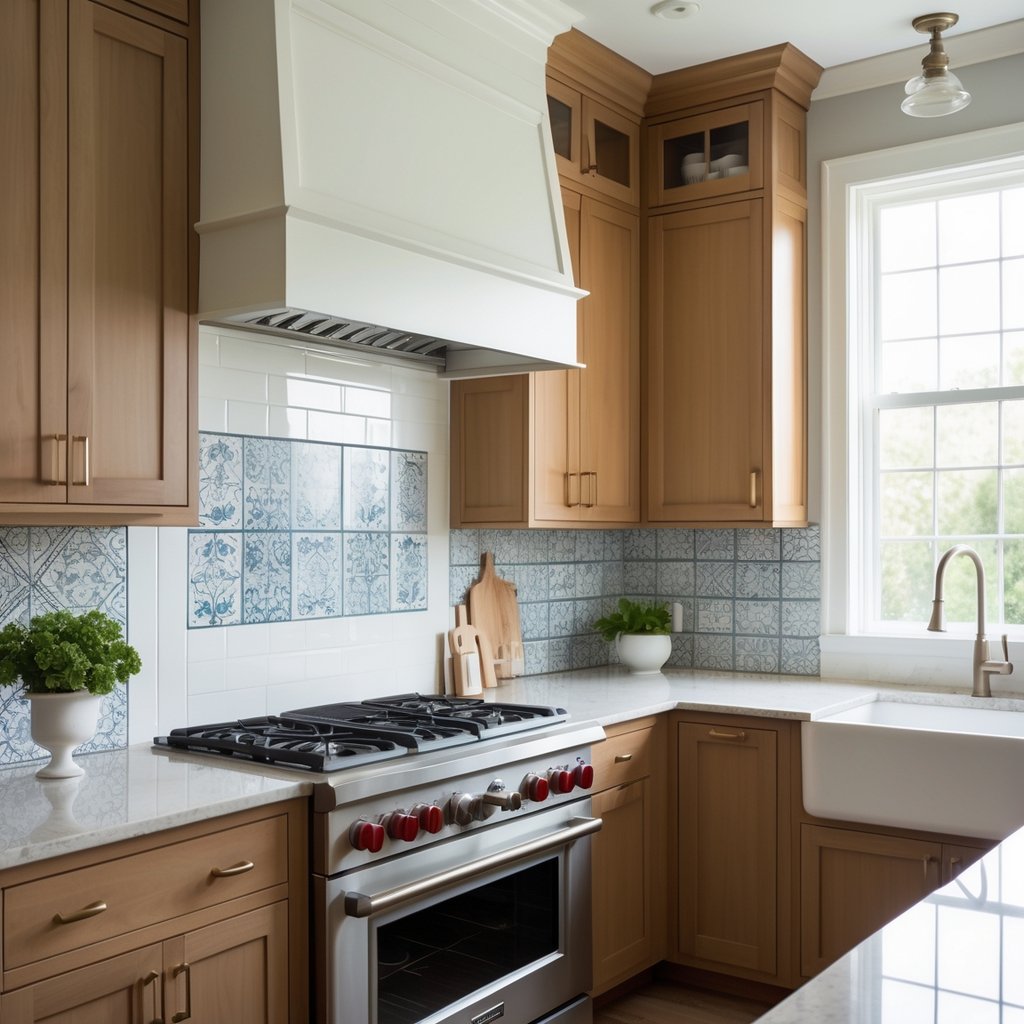
Using natural stone or textured tiles adds warmth and a natural feel. This creates balance between sleek surfaces and cozy elements.
The blend allows for easy cleaning and durability while keeping the kitchen visually interesting. It works well with various cabinet styles and countertops, making the space versatile and timeless.
9. Integrated Storage Solutions For Clutter-Free Space:
Integrated storage helps keep the kitchen clean and organized. Cabinets and drawers can be designed to hide appliances and utensils, reducing visible clutter.
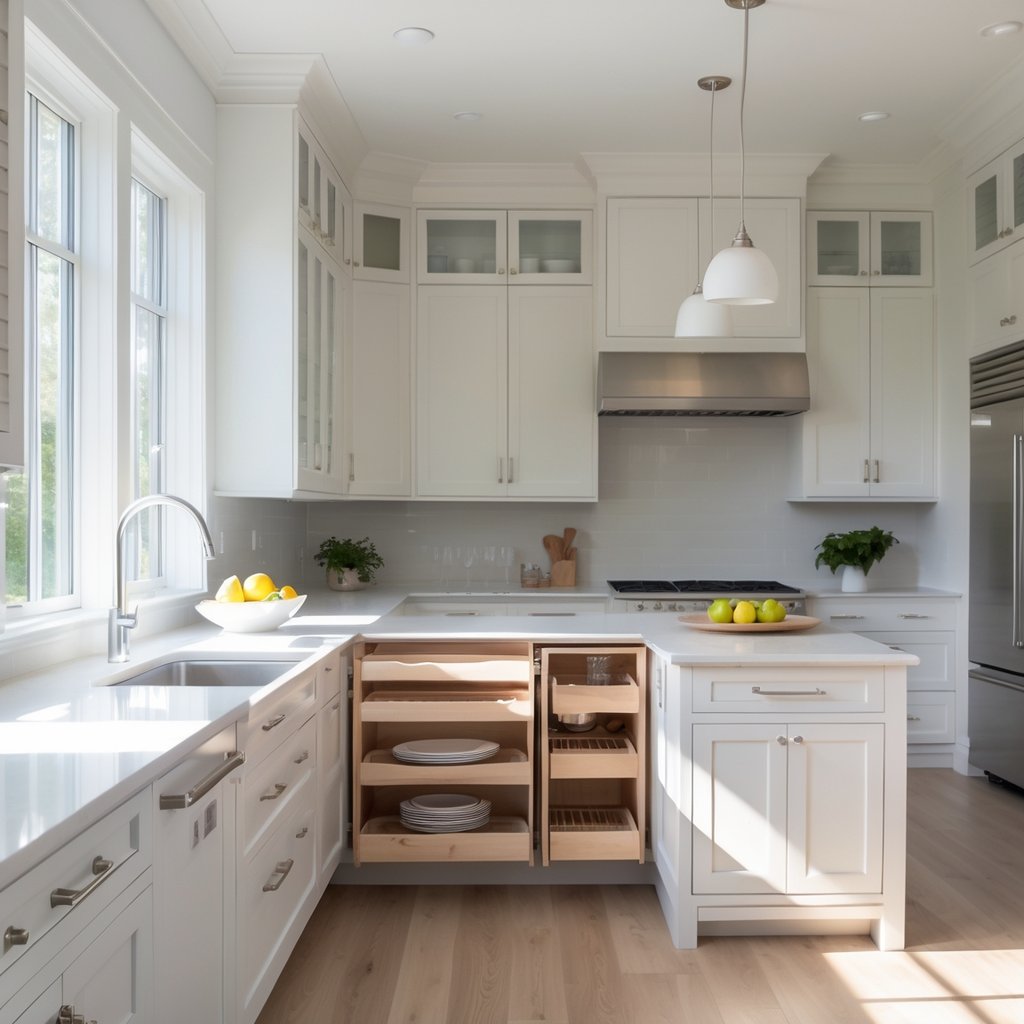
Pull-out shelves, built-in spice racks, and hidden compartments make items easy to access while keeping counters clear. This supports a neat and efficient workspace.
Such solutions blend well with transitional kitchen designs. They maintain a smooth look while providing practical storage without overcrowding the space.
10. Minimalist Cabinet Handles And Knobs:
Minimalist cabinet handles and knobs focus on simplicity and clean lines. They help create a streamlined look that fits both modern and transitional kitchens.
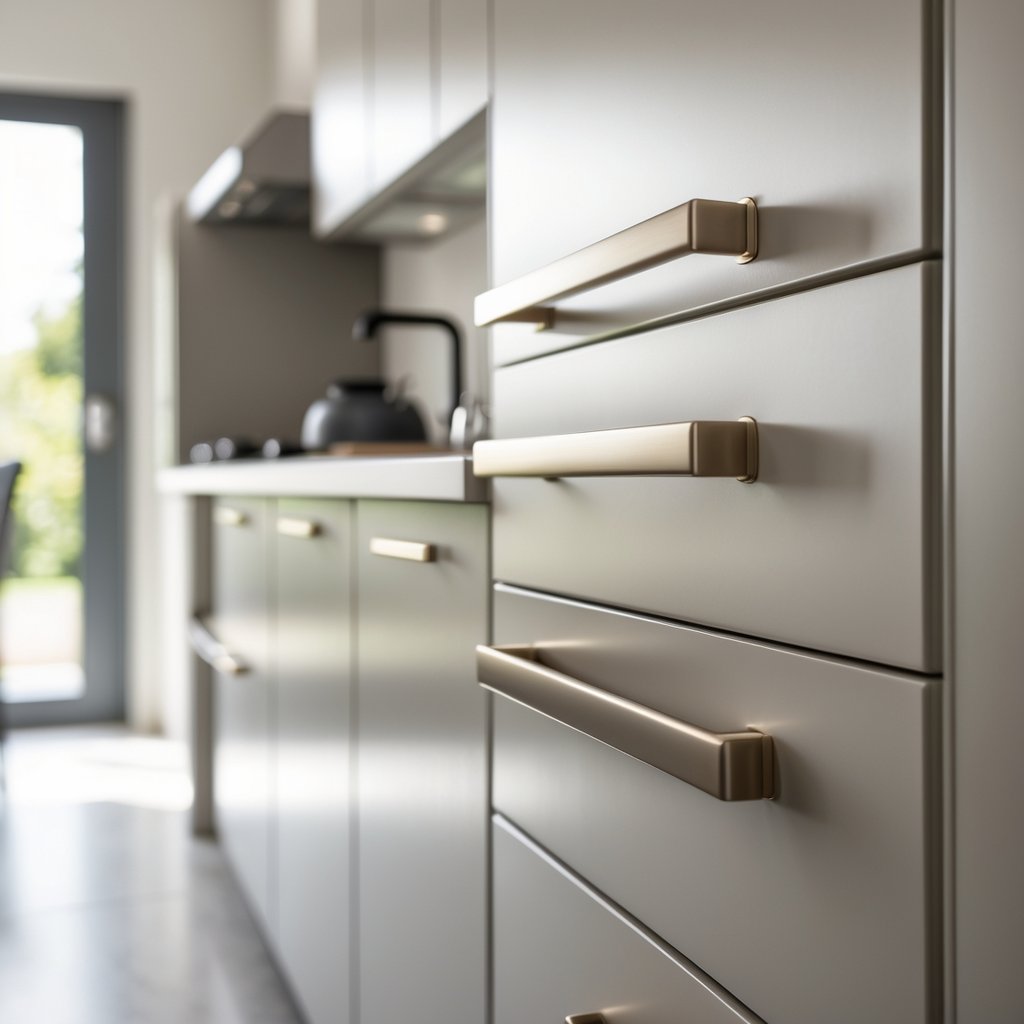
These hardware pieces often come in finishes like matte black, brushed nickel, or polished chrome. Their subtle design lets the cabinets stand out without adding visual clutter.
Choosing minimalist handles or knobs can make a kitchen feel more open and organized. They offer function without drawing too much attention, supporting a balanced and calm atmosphere.
11. Use Of Natural Textures Like Wood And Stone:
Natural textures like wood and stone bring balance to transitional kitchens. They add warmth without making the space feel too rustic or outdated. Wood can be used for cabinets, shelves, or ceiling beams, giving a cozy and inviting touch.
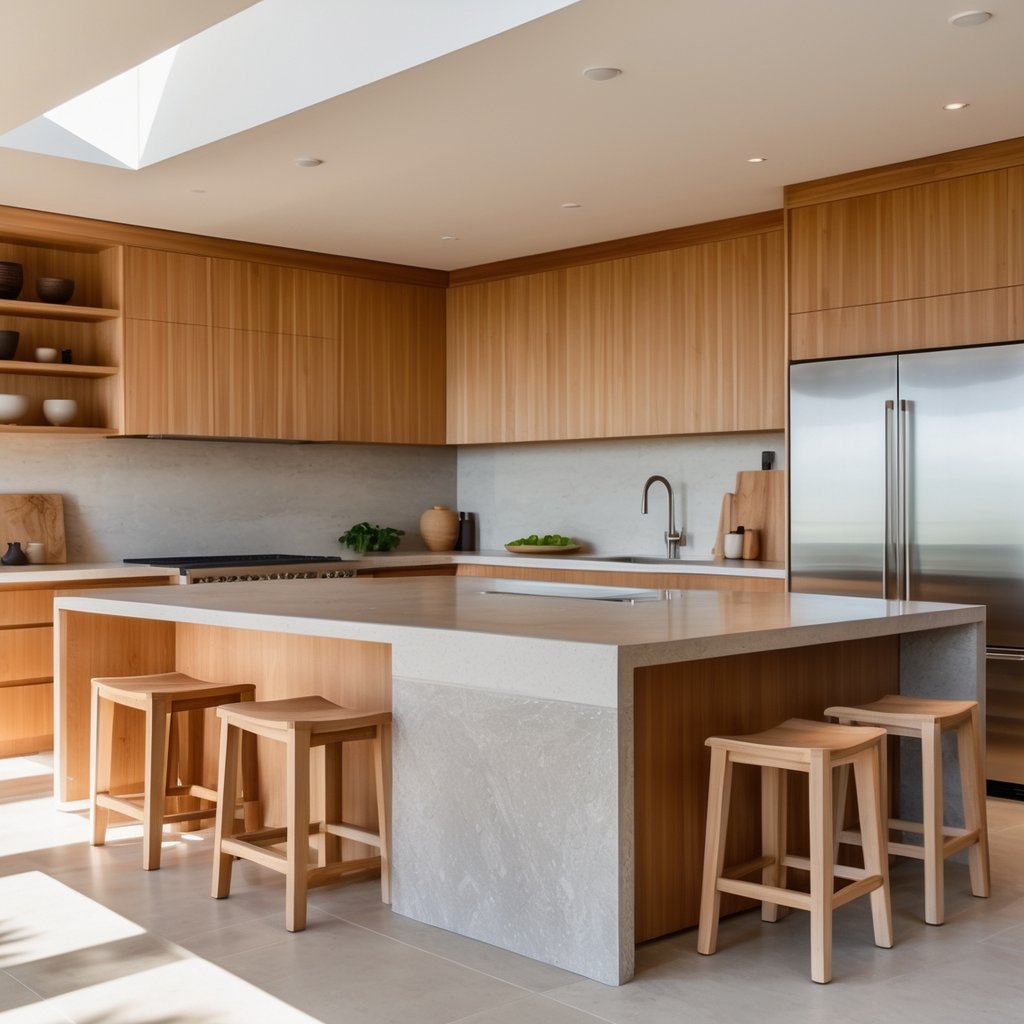
Stone countertops or accents offer a smooth contrast to wood’s grainy texture. This mix creates visual interest and a calm atmosphere. Together, these materials create a kitchen that feels both modern and timeless.
Core Elements Of Transitional Kitchen Design:
A transitional kitchen blends classic and modern features in a clean, balanced way. It focuses on simple colors, thoughtful materials, and functional details that help create a space that feels both fresh and timeless.
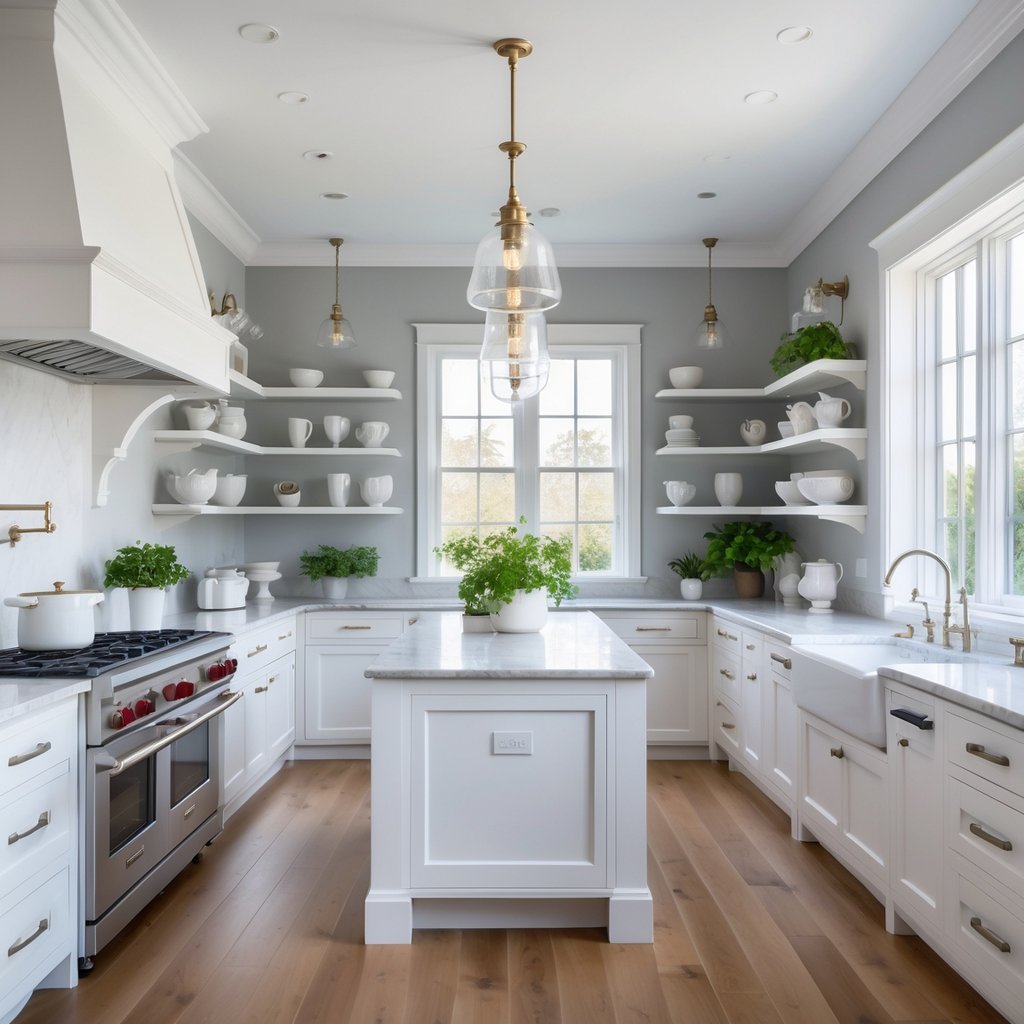
Balancing Modern And Traditional Styles:
Transitional kitchens combine the warmth of traditional design with sleek modern lines. This means pairing classic shapes or woodwork with updated finishes and fixtures. For example, shaker-style cabinets, which have a simple, timeless appeal, often mix with stainless steel appliances or streamlined lighting.
The goal is to avoid extremes—no overly ornate details or too stark minimalism. Instead, the mix should feel steady and inviting. This balance creates a kitchen that works for both casual family use and more formal entertaining.
Materials like stone countertops may be matched with wood flooring to add depth. Combining different textures also plays a big role in connecting the old with the new.
Color Palettes And Material Choices:
Neutral colors dominate transitional kitchens. Whites, grays, and beiges form the base palette, helping to maintain a calm and cohesive look. These tones allow textures and shapes to stand out without overwhelming the space.
Wood finishes are common, used in cabinets or flooring, bringing warmth and richness. Light to medium wood tones fit well here. Some designers add subtle pops of color with paint or backsplash tiles, but these are kept soft and understated.
Materials such as glass, steel, and stone are layered to add interest through contrast. For example, a marble countertop paired with matte black fixtures creates visual appeal without clashing.
Cabinetry And Hardware Selection:
Cabinets in transitional kitchens usually follow classic designs but with simple lines and minimal ornamentation. Shaker-style cabinets are popular because their straightforward layout fits the style’s clean aesthetic.
Hardware is where subtle modern touches often appear. Handles and knobs are usually sleek and streamlined, often in finishes like brushed nickel, matte black, or polished chrome. These finishes add a contemporary flair while remaining understated.
Choosing cabinetry and hardware that complement the room’s color palette and materials is important. The overall aim is a harmonious look where every detail works together without overpowering the space.
Enhancing Functionality And Flow:
A successful transitional kitchen blends style with ease of use. It focuses on clear lighting and smart storage solutions. These choices help create a kitchen that feels open, organized, and welcoming.
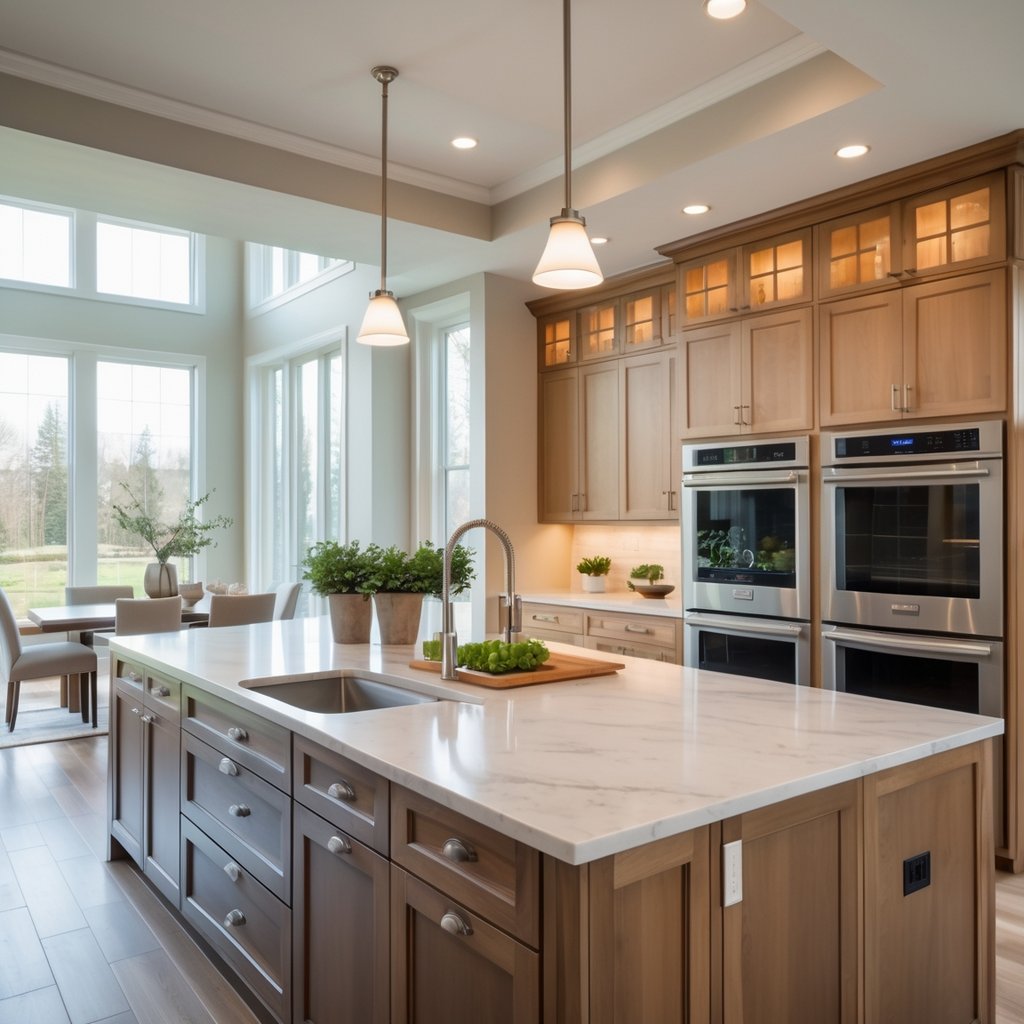
Lighting Strategies For A Balanced Space:
Good lighting helps define the kitchen’s mood and functionality. Layered lighting—using ambient, task, and accent lights—works best.
Ambient lighting provides general brightness. Ceiling-mounted fixtures or recessed lights spread even light across the room. Under-cabinet task lights focus on key areas like countertops and the sink.
Accent lights highlight design features like cabinetry or artwork, adding depth. Warm white bulbs give a cozy feel, matching the blend of classic and modern found in transitional kitchens.
Adjustable fixtures and dimmers offer control. This flexibility lets users switch from bright cooking light to softer, relaxed lighting for dining.
Maximizing Storage Without Compromising Style:
Efficient storage is key to maintaining a clean kitchen while keeping its look intact.
Use shaker-style cabinets with smart organizers inside. Slide-out shelves, pull-out trash bins, and vertical dividers make better use of space.
Open shelving keeps everyday items accessible but should be balanced with closed cabinets to avoid clutter.
Corner cabinets with lazy Susans or pull-out trays use awkward space well. Drawers should include inserts for utensils and spices to stay tidy.
Using mixed materials, like wood and glass doors, can keep storage stylish without overwhelming the design.

